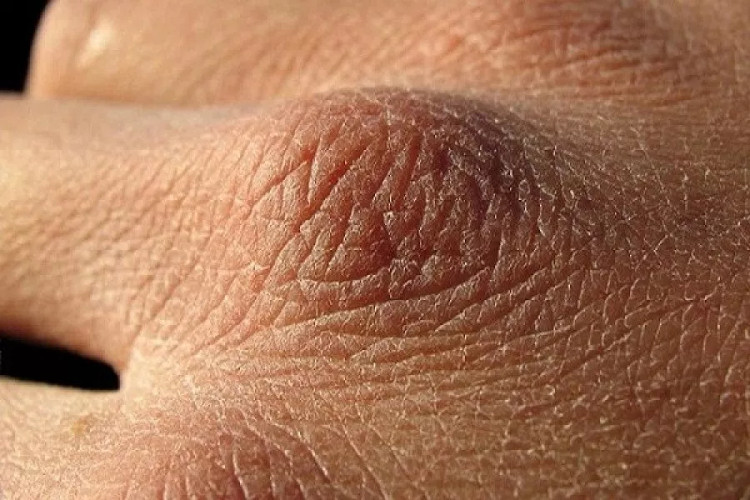500 million skin cells are excreted every day but why does blood, body fluids do not leak through the skin?
Let's find out why our skin is worn out every day but our body fluids cannot leak through the skin.
We know that every day, the body releases 500 million dead skin cells and about 1 liter of sweat.
The question is, does the skin get "worn out" every day, but why doesn't the skin leak or leak body fluids?

The epidermis in mammals has two physical membranes in the top two layers of the epidermis.
Finally scientists have got the answer to this. Accordingly, the skin formed by the tetrakaidecahedrons arranged and shaped. Tetrakaidecahedrons will be responsible for leaving no space even when individual cells on the skin peel off.
To reach this conclusion, Reiko Tanaka of the Royal College of London and colleagues studied different layers of the epidermis in mammals. The study found that epidermis in mammals has two physical membranes in the top two layers of the epidermis.

Basic shape of 1 tetrakaidecahedrons.
The surface is a membrane of liquid air formed by the outer layer of the skin, also known as the corneum . The process of keratinization begins, the cells produce small particles and move upwards, transforming into keratin and epidermal lipids. This layer is called granulosum.
The granulosum is very important to ensure our skin does not leak, because it is the layer where the tight joint is formed. The outermost layer of the skin cannot form without the granulosum.
For mammals, to excrete the outer skin, new skin cells must constantly be produced in the lowest layer of the epidermis before moving into the granulosum. Here they replace old skin cells, and push them to the outermost layer to wait for their elimination.
Tanaka and his team used isotopic microscopy to examine granulosum-grade cells in the rat's ears and found that this cell shape is really important to the diaphragm they form.
In experiments conducted on rats, cuticles in mammals are similar, especially in deeper layers.
According to experts, corneocytes - the type of skin cells in the outermost layer of the epidermis in humans is more diverse in mice. The tetrakaidecahedron model still applies and can make a big difference in studying skin condition in humans.

Hand skin flaking.
Reiko Tanaka of the Royal College of London shared : "This study tells us whether cells that make up the skin can be transferred to a mechanism to perform the role of cell-binding glue."
Here, the research team also understands more about how epithelial activity of mammals works, thereby explaining the root cause of chronic skin diseases such as eczema, psoriasis .
The team now plans to determine the thickness of the skin in the epidermis and how to balance the elimination, skin cell growth that helps identify the source of errors, possible problems.
Research published in eLife.
- Why does body fluids not leak through the skin?
- Making blood from human skin
- 10 interesting things about human skin
- Successfully developing blood from human skin, opening a new era for medicine
- How does white blood cells help us fight disease?
- 10 facts that make you fall back on your body
- New discovery about the secret of being young and not old
- Blood vessels cultured from skin cells
- Skin cells can replace liver diseases
- Treatment of diseases with blood made from the skin of the patient
- Using artificial blood on human body
- The truth about blood type in your body
 'Fine laughs' - Scary and painful torture in ancient times
'Fine laughs' - Scary and painful torture in ancient times The sequence of numbers 142857 of the Egyptian pyramids is known as the strangest number in the world - Why?
The sequence of numbers 142857 of the Egyptian pyramids is known as the strangest number in the world - Why? Miracle behind the world's largest stone Buddha statue
Miracle behind the world's largest stone Buddha statue What is alum?
What is alum?